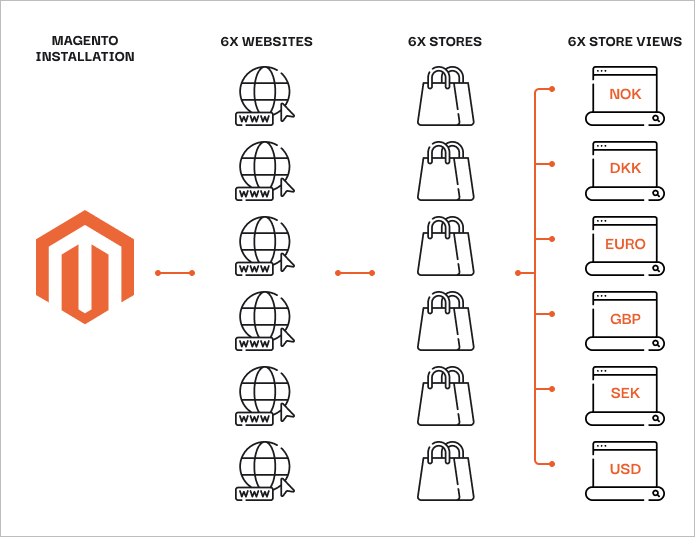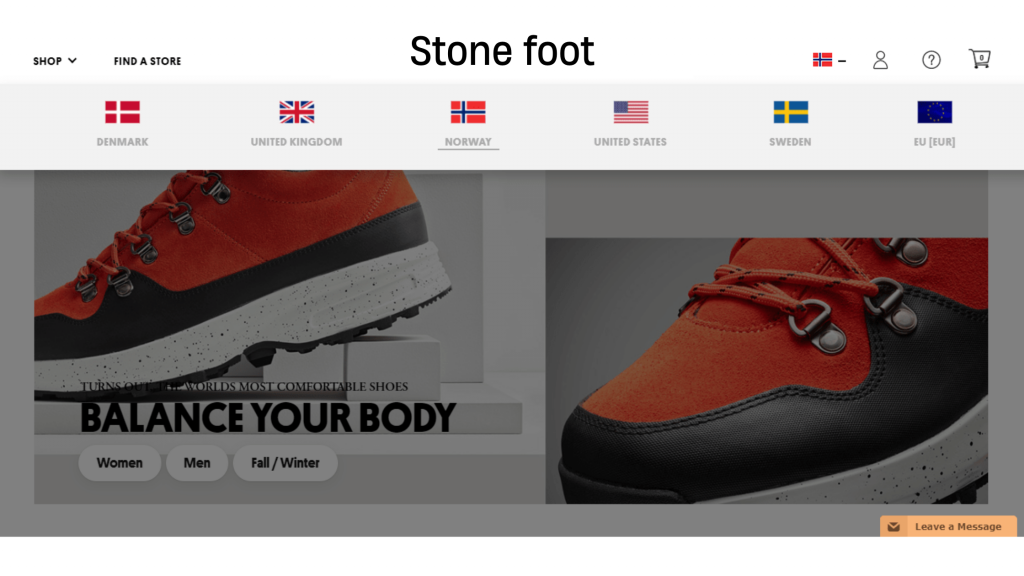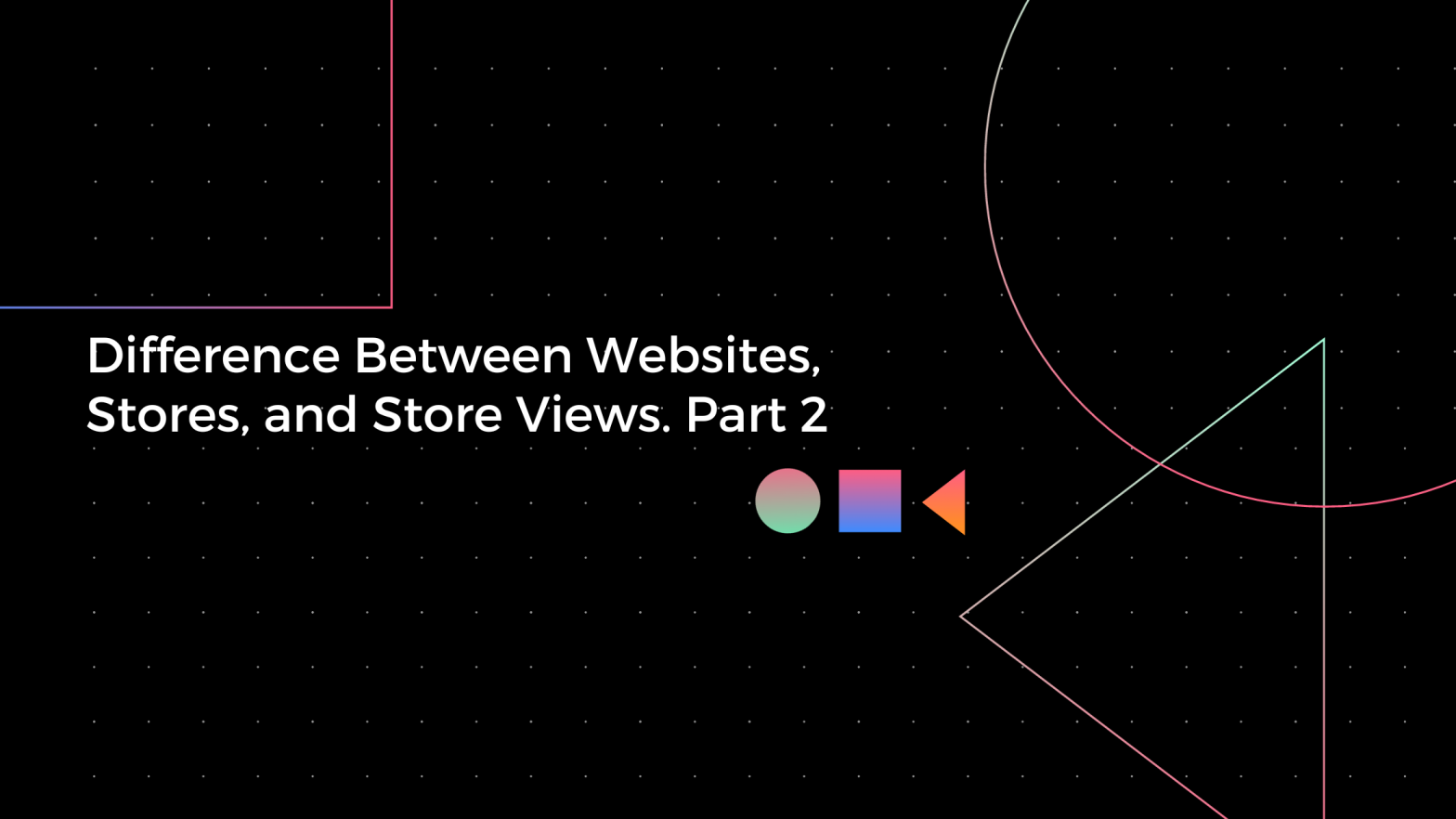Magento 2 is a powerful e-commerce platform that enables businesses to create impressive online stores. One of the key features of Magento 2 is the ability to manage multiple websites, stores, and store views within a single administrative interface. This article will explore how multi-website, multi-store, and multi-view capabilities can be used in various scenarios, providing examples based on the imaginary company “Stone Foot.”

“Stone Foot” is a Norwegian footwear brand that successfully sells its products in various countries. In this example, we demonstrate the remarkable capabilities of Magento 2 in enhancing the success of a footwear store. By leveraging its power, businesses can effectively manage multiple websites, stores, and views, boosting their efficiency and ultimately achieving remarkable results.
- Multi-website: In the context of “Stone Foot,” multi-website means having multiple websites for different geographic markets. For example, “Stone Foot” has created a separate website for each country where they sell their footwear (Denmark, the United Kingdom, Norway, the United States, Sweden, and the European Union). It includes configuring website design, language, and branding to cater to the local audience. For instance, a website targeting customers in the United Kingdom might use British English and display prices in pounds sterling. In contrast, a website for the United States might use American English and display prices in US dollars. Additionally, this allows them to configure different currencies. One of the main benefits is that the prices of the products are shown in the currency that is most familiar to the customer. This helps to avoid any confusion and prevent the customer from abandoning their shopping cart because of issues with currency conversion. Another vital aspect to consider is the matter of shipping and taxation. Shipping options and tax rates are specific to each geographic market. This option ensures that customers see accurate shipping costs and taxes applicable to their location. Like different languages and currencies, each website can have its own SEO strategy and marketing campaigns tailored to the local audience. It, in turn, provides detailed analytics and reporting on customer preferences and behaviors in different markets. This data can be vital for decision-making and the development of marketing strategies.
- Multi-Store: “Stone Foot” uses multi-store for each of its websites. The United Kingdom website, for example, has the ability to create distinct stores for women’s and men’s footwear, all while maintaining a sleek and cohesive design throughout the website.It enables them to manage product catalogs for each type of footwear efficiently.
- Multi-Views: “Stone Foot” utilizes multi-view functionality for each store and each footwear category. For example, the women’s footwear store in the United Kingdom can create separate pages for shoes, boots, and sneakers. It allows them to tailor content, images, and prices for each footwear category, providing greater flexibility and precision in content management on the website.

Magento 2 helps “Stone Foot” provide customers with a personalized experience and efficiently manage their business in various geographic markets. Magento 2 allows enterprises to effectively manage multi-website, multi-store, and multi-view functionalities to deliver customized shopping experiences and expand their presence in diverse markets. Understanding these concepts helps maximize the potential of Magento 2 and adapt it to the unique needs of your business.
